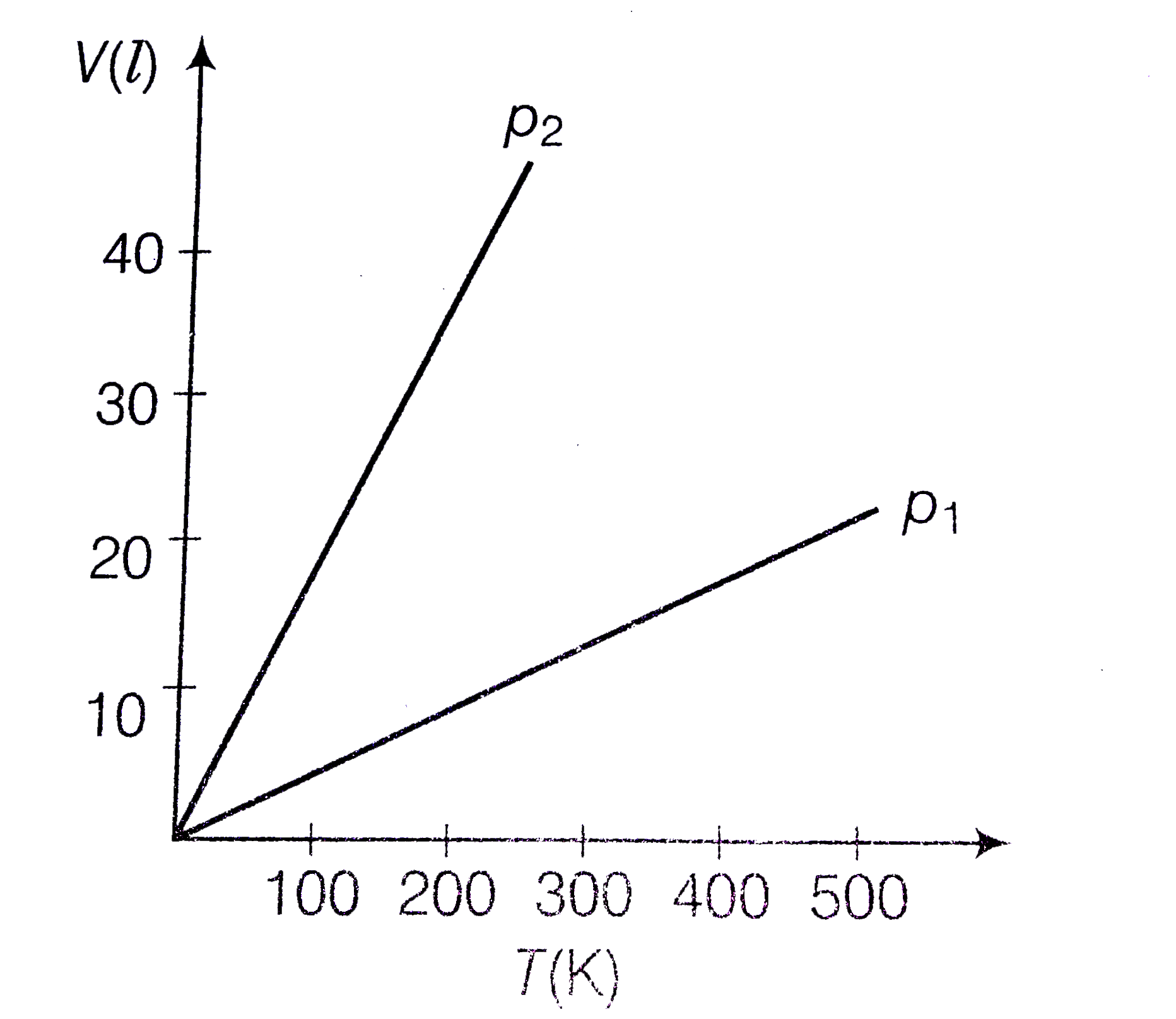At constant temperature, in a given mass of an ideal gas
the ratio of pressure and volume always remains constant
volume always remains constant
pressure always remains constant
the product of pressure and volume always remains constant.
The correct Answer is:D
To solve the question regarding the behavior of an ideal gas at constant temperature, we can follow these steps:
1. Understand the Context: We are dealing with an ideal gas at constant temperature. This implies that we are looking at a scenario where the temperature does not change while examining the gas's properties.
2. Recall Boyle's Law: Boyle's Law states that for a given mass of an ideal gas at constant temperature, the pressure (P) and volume (V) of the gas are inversely related. This means that if the volume increases, the pressure decreases, and vice versa.
3. Formulate the Relationship: According to Boyle's Law, the product of pressure and volume (PV) remains constant. Mathematically, this can be expressed as:
PV=k
where k is a constant for a given mass of gas at a constant temperature.
4. Analyze the Options: Now, we can evaluate the provided options:
- Option A: The ratio of pressure and volume always remains constant. (Incorrect)
- Option B: Volume always remains constant. (Incorrect)
- Option C: Pressure always remains constant. (Incorrect)
- Option D: The product of pressure and volume always remains constant. (Correct)
5. Conclusion: Based on Boyle's Law, the correct answer is that the product of pressure and volume of a given mass of an ideal gas at constant temperature is always constant. Therefore, the correct option is D.
Final Answer:
The product of pressure and volume always remains constant (Option D).
---
PV=k
where k is a constant for a given mass of gas at a constant temperature.
- Option A: The ratio of pressure and volume always remains constant. (Incorrect)
- Option B: Volume always remains constant. (Incorrect)
- Option C: Pressure always remains constant. (Incorrect)
- Option D: The product of pressure and volume always remains constant. (Correct)
The product of pressure and volume always remains constant (Option D).
Topper's Solved these Questions
- STATES OF MATTER : GASES AND LIQUIDSBOOK - ICSECHAPTER - STATES OF MATTER : GASES AND LIQUIDSEXERCISE - TRUE OR FALSE TYPE QUESTION
15 Videos
- STATES OF MATTER : GASES AND LIQUIDSBOOK - ICSECHAPTER - STATES OF MATTER : GASES AND LIQUIDSEXERCISE - FILL IN THE BLANKS. TYPE QUESTIONS
10 Videos
- STATES OF MATTER : GASES AND LIQUIDSBOOK - ICSECHAPTER - STATES OF MATTER : GASES AND LIQUIDSEXERCISE - ESSAY (LONG ANSWER ) TYPE QUESTIONS
10 Videos
- SOME P-BLOCK ELEMENTS BOOK - ICSECHAPTER - SOME P-BLOCK ELEMENTS EXERCISE - NCERT TEXTBOOK EXERCISES (With Hints and Solutions)
63 Videos
- STRUCTURE OF ATOMBOOK - ICSECHAPTER - STRUCTURE OF ATOMEXERCISE - NCERT Textbook Exercises
67 Videos
Similar Questions
Knowledge Check
Volume versus temperature graphs for a given mass of an ideal gas are shown in figure. At two different values of constant pressure. What can be inferred about relation between P1 and P2 ?
 AP1>P2BP1=P2CP1<P2Ddata is insufficient
AP1>P2BP1=P2CP1<P2Ddata is insufficient
At constant temperature if the pressure of an ideal gas is increased by 10% then its volume must decrease by
View SolutionAt constant temperature if the pressure of an ideal gas is increased by 10% then its volume must decrease by
View SolutionThe raise in the temperature of a given mass of an ideal gas at constant pressure and at temperature 27∘ to double its volume is
View SolutionPressure remaining the constant, the volume of a given mass of an ideal gas increases for every degree centigrade rise in temperature by definite fraction of its volume at:
View SolutionThere is no change in internal energy for an ideal gas at constant temperature.
Internal energy of an ideal gas is a function of temperature only.
View SolutionVolume versus temperature graphs for a given mass of an ideal gas are shown in figure. At two different values of constant pressure. What can be inferred about relation between P1 and P2 ?

View SolutionVolume versus temperature graphs for a given mass of an ideal gas are shown in figure. At two different values of constant pressure. What can be inferred about relation between P1 and P2 ?

View Solution
